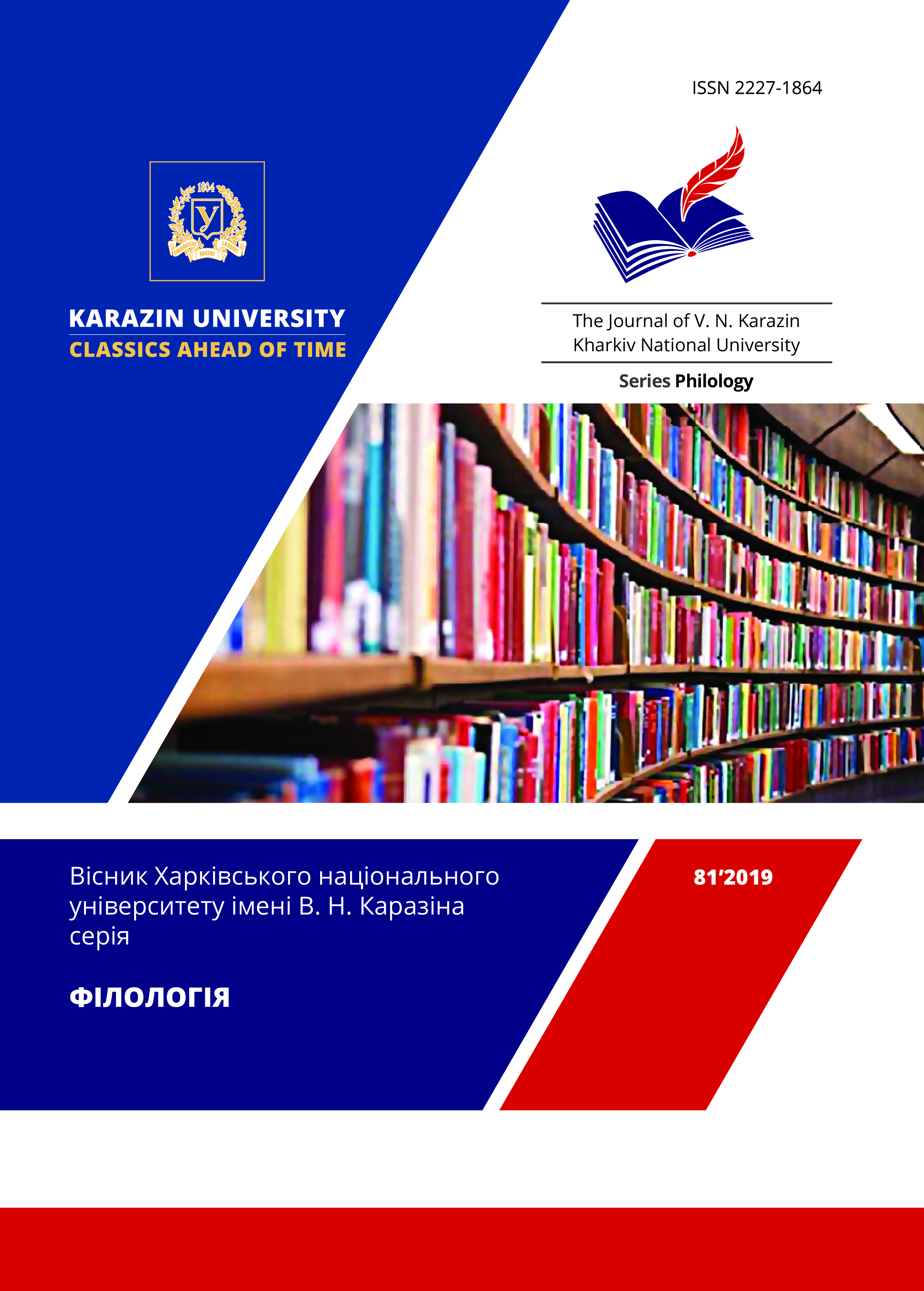The activation of ideological content of the story "Dark They Were, and Golden-Eyed" by Rey Bradbury with the help of symbolic images by means of artistic expression
Abstract
The prose of American fiction writer Ray Bradbury is a vivid example of worldview moves in American prose of the twentieth century. The article investigates the role and significance of author's symbolic images influencing on the reader's thought-making and spiritual processes and plays a significant role in activating the ideological content of Ray Bradbury's story "Dark They Were, and Golden-Eyed". The study considered the functioning of symbolic images, their interaction and dynamics in the process of deployment of the plot. The author of the article highlights the opinion that the study of the symbolism of the work is a necessary prerequisite for understanding the author's outlook and an important component in decoding the ideological content of the story. The idea of the work, that spirituality is inevitable and research development in the world conquest is a false way, is disclosed according to the central moments of the story. There are such features of character modification at different levels: 1) at the level of characters consciousness through the description of the terrestrial flora and fauna regeneration; 2) at the level of physiology through the reflection of the sun and water influence on the human body; 3) at the level of the spiritual world metamorphosis of characters; 4) on the level of characters’ ideology; 5) at the level of psychology it is the reluctance to return from the Mars house to the Earth settlement. The author carries out the interpretation of the symbolic characters of the writer relying on the context and exploring the emotional psychological and philosophical hidden motives that allow understanding the author's plan more. Interaction of wind, rocket, river, mansion, language, tree and golden color symbolic images creates a field for interpreting the ideological content of the story. The complete decoding of the symbolic characters helps to read the philosophical subtext of the story allowing to identify the author's perception of the world. The study discovered that the characters in the story "Dark They Were, and Golden-Eyed" by Ray Bradbury are filled with new content. It specifies and activates the ideological content, and makes stronger the reader's intellectual and creative processes.
Downloads
References
Berezhnoy S. Living time machines or a story about how Bradbury became Bradbury // World fiction. – 2012. – №8. – p.18-24.
Bredberi R. All is only one day. 100 opovіdan. Tom first : 2 books. Prince 2 / Ray Bredberі. – Ternopil : Navchnal book – Bogdan, 2015. – 592 p. – p. 45-59.
Вudny B. Porіvnilna literaturaznavstvo: [pіdruchnik] / V. Budny, M. Ilnitsky. – K. : Vidavnichy dim “Kiyevo-Mogilyanska akamediya”, 2008. – 430 p.
Green Robert. 48 Laws of Power / Robert Green. – M.: Ripol Classic, 2001. –576 p.
Denisov, T. Istoriya American American Literature XX Century / T. Denisov. – Kiev: Knowledge, 2002. – 250 p.
Drobit І. M. Historical Discourse in the British Romance of the 80s – 90s, XX Century : Abstract. dis. Cand. filol. Sciences: 10.01.04 / І. M. Drobit. – K . : view of Kyiv. nat un-tu im. T. Shevchenko, 2010. – 20 p.
Encyclopedia of symbols, signs, emblems / [author-status. V. Andreeva, V. Kuklev, A. Rovner; total ed., ill., marginals: A. Egorov]. – M. : Astrel : MYTH : AST, 2001. – 576 p.
Kozubenko L. Zagalnoludska paradigm of a little prose by Ray Bredberi / Theoretical and didactic philology. Seriya "Philology". Vipusk 23, 2016. – p. 90-97.
Literary encyclopedic dictionary / [under total. ed. V. M. Kozhevnikova and P. A. Nikolayev]. – M. : Owls. encyclopedia, 1987. – 752 p.
Lotman Yu. M. Symbol in the system of culture / Yu. M. Lotman. – Tallinn: Alexandra, 1992. – 266 p.
Roshal V.M. Encyclopedia of Symbols / V.M. Roshal. – M. : AST ; SPb. : Owl, 2008. – 224 p.
The vocabulary of the symbols of the culture of Ukraine / For the cunning editor V. P. Kotsura, O. І. Potapenka, M. K. Dmitrenka. – Kiev : Mylenium, 2002. – 260 p.




